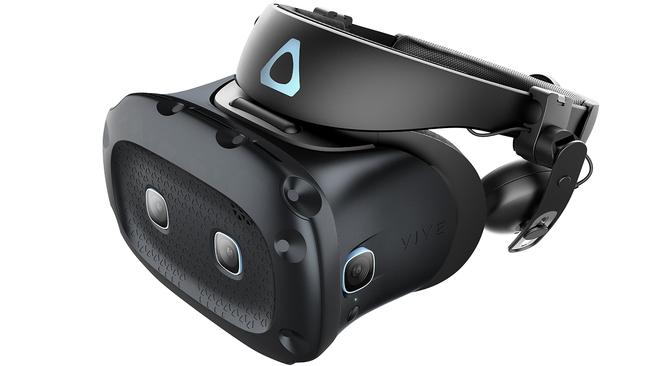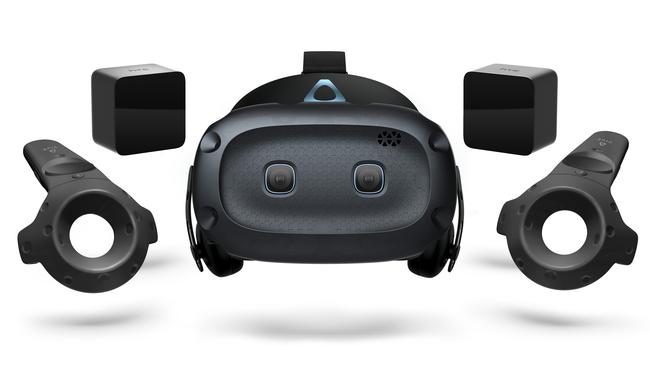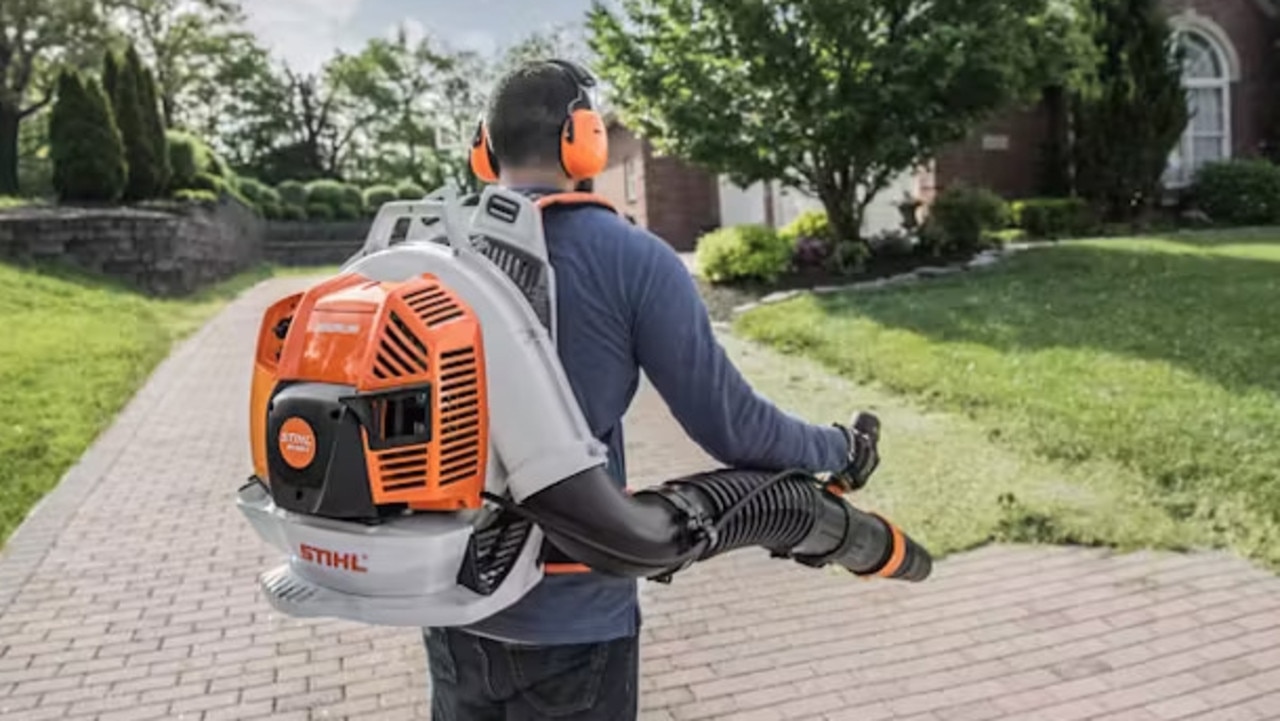Review: HTC Vive Cosmos Elite offers sharp VR
The HTC Vive Cosmos Elite is a solid VR unit with lots of promise but it has issues too.

Virtual Reality gaming continues to bubble away quietly in the background. But it also seems to be struggling to overcome some fundamental design or technology issues that keep it from breaking into the mainstream.
Virtual reality (VR) computing requires a lot of power and specialist hardware, and HTC have been very active in the PC VR gaming area with their Vive headset range. I’ve had a chance to test the latest addition, the HTC Vive Cosmos Elite.
The HTC Vive Cosmos Elite is a solid VR unit with a lot of promise, but it’s also a bit unwieldy and suitable more for enthusiasts than someone thinking they wouldn’t mind seeing what all this VR stuff is about. It’s also not ideal for people with small spaces or limited budgets. It also is expensive at an RRP of $1699.
The actual VR quality and images the unit offers are excellent, however. I reviewed it playing a number of games with Half-Life: Alyx, Arizona Sunshine and No Man’s Sky, and the games themselves played very well with the unit.
The unit is a fairly involved affair, with a headset with several sensor cameras, two external base station sensors, and a lot of cables.
While not especially heavy, the headset is quite bulky and I struggled to find a good compromise between “comfort for extended use” and “clear picture”, although this is not a problem confined to this headset alone.

The images in the HTC Vive Cosmos Elite are the sharpest and clearest I’ve encountered in a PC-based VR unit; the 1440x1700 DPI resolution in each eye screen makes a big difference here. The 90hz refresh rate is also great, and a big help in preventing simulation sickness issues too.
No Man’s Sky worked particularly well, with the HTC Vive Cosmos Elite really helping to create the feeling of being an astronaut exploring fantastic alien worlds, right down to piloting your spaceship.
Helped by the base stations, the movement tracking with the Cosmos Elite is very good too – I didn’t encounter issues with my virtual hands suddenly leaping all over the place or coming out of alignment with whatever I was doing. In Arizona Sunshine, I was able to accurately place shots on incoming zombies, and I didn’t have any issues with the combat or puzzles in Half-Life: Alyx either.
The visor can be flipped up easily, which is a big help if you have children needing your attention or want to make sure you’re not about to trip over anything in the area.
There are stereo headphones attached to the unit and they provide surprisingly good and immersive sound; I was able to adjust them to offer a good mix of in-game sound while still letting me hear what was going on in the real world too.
From a gaming experience the unit is excellent, however the overall set up is simply clunky, cumbersome and suffers from a lack of design polish, sadly.
Case in point: The unit needs three AC adaptors to work properly – one each for the room sensors, a third for the headset itself – with all the attendant cables everywhere that entails. The adaptors themselves are large and positioned at right angles to the power plug, and even though the technology exists, cannot be rotated for a better fit.

As a result, I had to go and buy a 10-plug power board to have enough plugs and space to plug in the PC, monitor, and HTC Vive Cosmos Elite.
There’s also the space factor. To get the best experience, the unit needs a fairly decent play area of around 3.5m x 3.5m, which makes sense for something like the PlayStation VR unit in a lounge, but is rather impractical in a home office set up where most people would have their powerful gaming PC that can run the VR equipment.
When using the unit in a seated set up, there’s no minimum size, but given the HTC Vive Cosmos Elite is really designed to be used in a standing play area set up, it seems counter-productive to buy a $1700 headset with external tracking base stations only to use it while seated at a desk.
The controllers charge via micro USB connections and seem to take ages to do it. And since there’s two of them, that means two USB ports or external chargers are out of commission while you wait for them to charge.
Normally I’m not a fan of using AA or AAA batteries over internal rechargeable batteries, but in this case I think it probably would have been a better design choice for the unit.
For me, the HTC Vive Cosmos Elite represented a strange mixture of a good VR gaming experience but a disappointing user experience. This is compounded by the high price of the unit and the general lack of really good VR games – for every Half-life: Alyx or No Man’s Sky, there’s a pile of forgettable titles out there, although it must be stressed this is not the fault of the headset manufacturers.
Ultimately for me, the hassle and stuffing around in getting the unit set up and using it far outweighed the fun I had playing VR games with it. This is a disappointing state of affairs because I am generally enthusiastic about VR and would really like to see it become more widespread.
For the VR enthusiast with the space to really get the most out of what the unit can do, there’s some appeal here, but for a regular or even enthusiast gamer looking to make the move to VR, the HTC Vive Cosmos Elite isn’t the launch pad to do it yet, sadly.



To join the conversation, please log in. Don't have an account? Register
Join the conversation, you are commenting as Logout